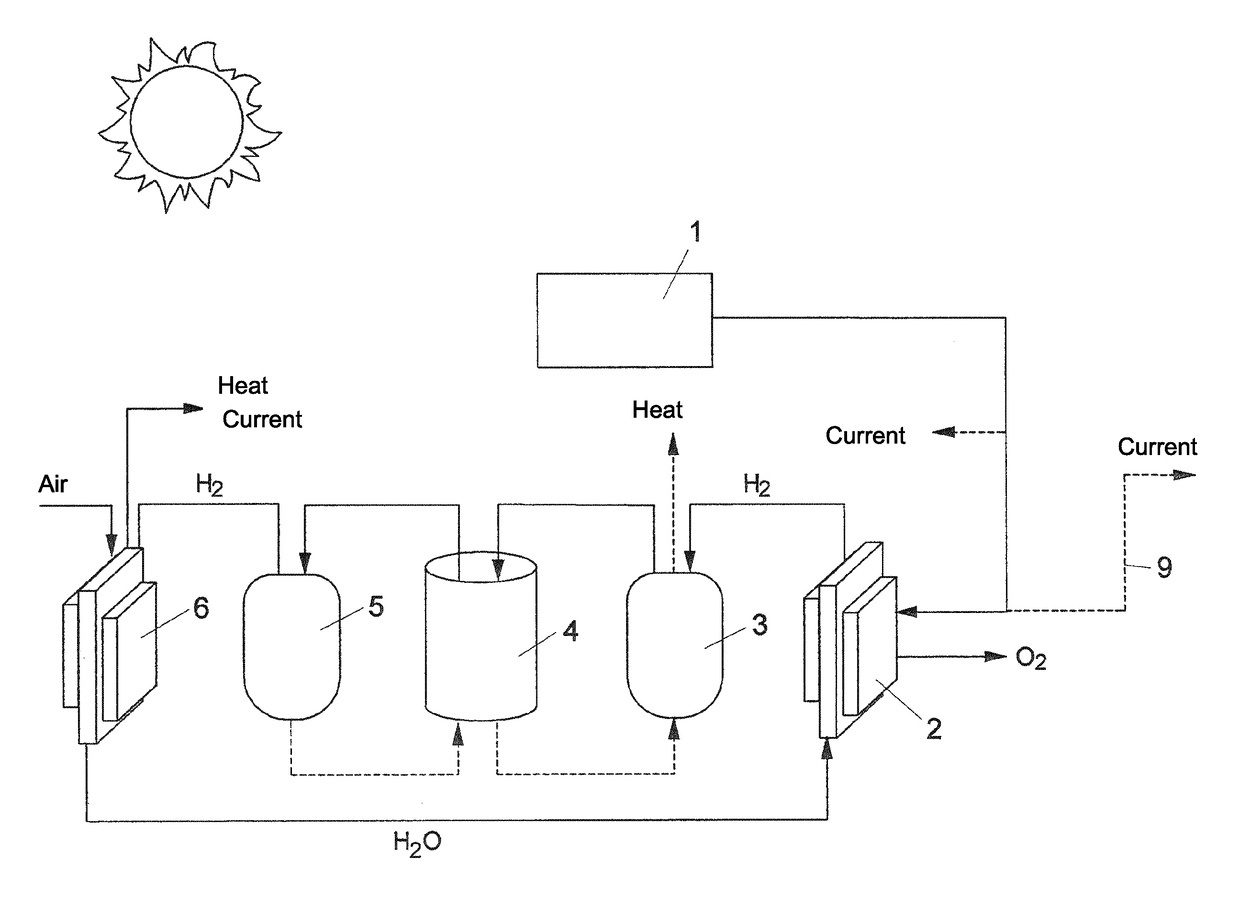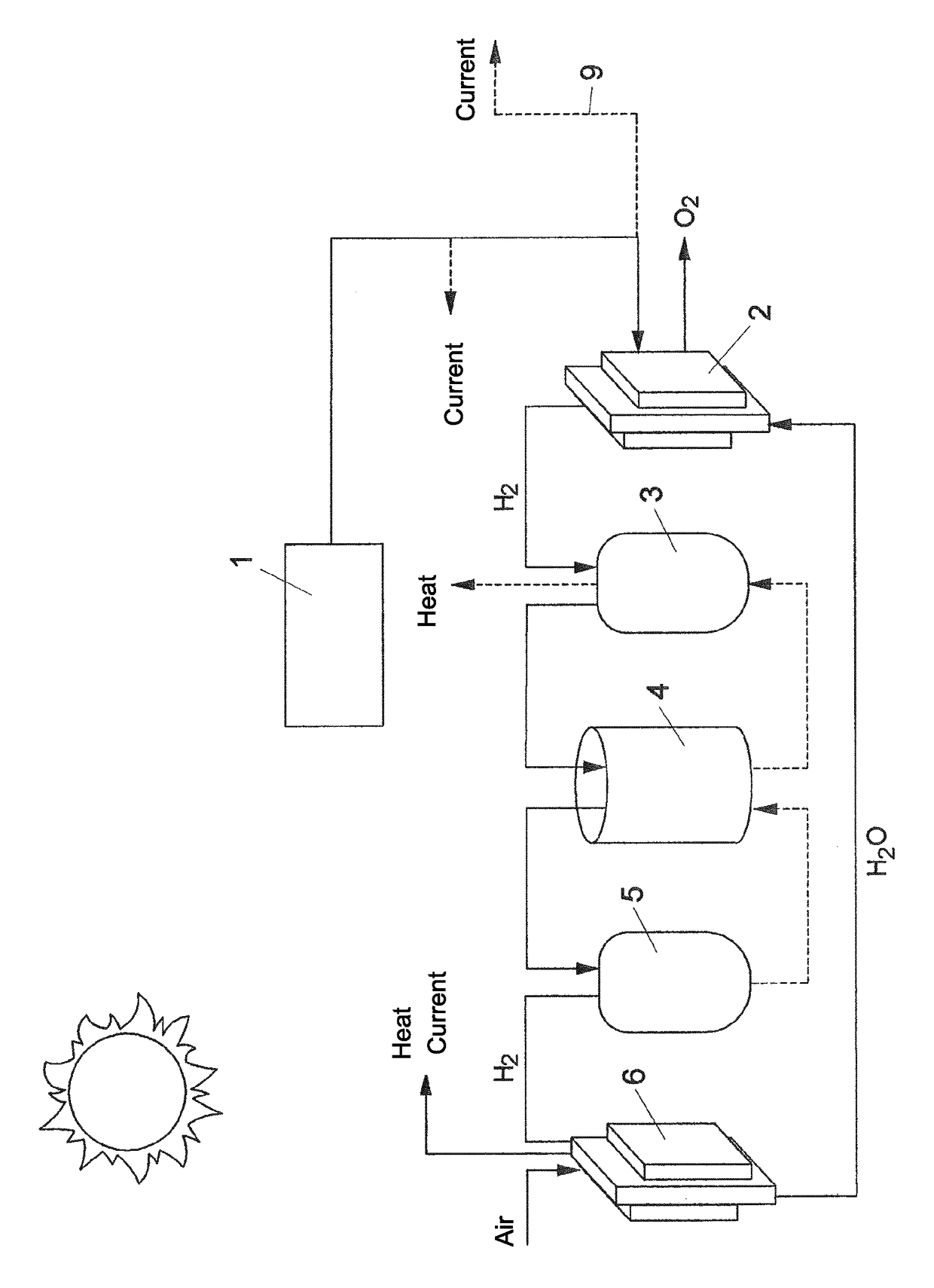Arrangement and method for supplying energy to buildings
a technology for building energy and arrangement, applied in the direction of fuel cell auxiliaries, fuel energy technologyologies, fuel cells, etc., can solve the problems of high cost of the carrier, low energy density per volume, hydrogen explosion, etc., and achieve constant heat and energy supply, long usage times, and high number
- Summary
- Abstract
- Description
- Claims
- Application Information
AI Technical Summary
Benefits of technology
Problems solved by technology
Method used
Image
Examples
example
[0076]A 120 qm house forms the basis, which is build according to ENEV 2012 and has an annual heating requirement of 30 kWh / qm and warm water requirement of 12.5, in some 42.5 kWh / qm.
[0077]With a heating value of hydrogen in Perhydro-N-Ethylcarbazol an annual volume of 2,400 liters=5,100 kWh / a of a low energy substance, thus the present tank size of an oil heating. An electrical need of 4,065 kW comes on top of it such that the total energy need is 9,165 kW / a.
[0078]If one calculates 1 qm a solar panel with 100 W and a full load time of 1,000 h, 100 kWh / qm or for 9,165 kWh 92 qm solar panel for complete annual energy supply are required.
[0079]Herewith it is shown that by estimation a one-family house with 92 qm solar cells and a 2,400 liter storage tank can be self-sufficient.
PUM
| Property | Measurement | Unit |
|---|---|---|
| pressure | aaaaa | aaaaa |
| pressure | aaaaa | aaaaa |
| life time | aaaaa | aaaaa |
Abstract
Description
Claims
Application Information
 Login to View More
Login to View More - R&D
- Intellectual Property
- Life Sciences
- Materials
- Tech Scout
- Unparalleled Data Quality
- Higher Quality Content
- 60% Fewer Hallucinations
Browse by: Latest US Patents, China's latest patents, Technical Efficacy Thesaurus, Application Domain, Technology Topic, Popular Technical Reports.
© 2025 PatSnap. All rights reserved.Legal|Privacy policy|Modern Slavery Act Transparency Statement|Sitemap|About US| Contact US: help@patsnap.com



